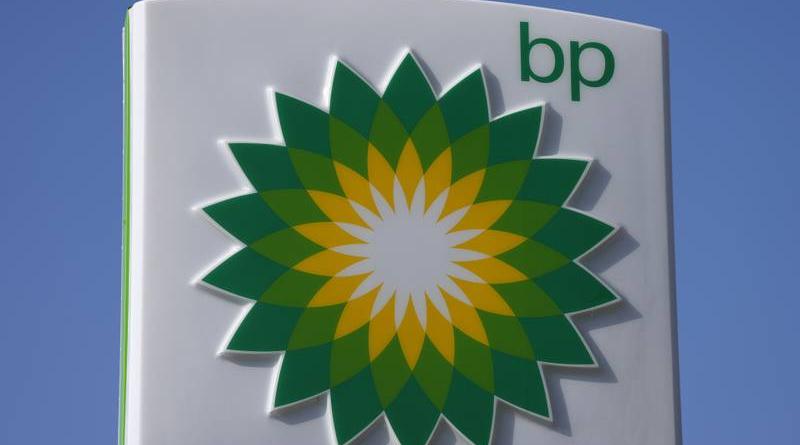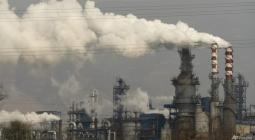Energy demand and carbon emissions bounce back to pre-pandemic levels, BP says

Global energy demand and carbon emissions bounced back to around pre-pandemic levels in 2021, reversing the reduction in 2020 resulting from the coronavirus pandemic as global economies recover, BP said in its annual statistical review of world energy.
Use of primary energy — which is harvested directly from natural resources — grew by a record amount in 2021, with emerging economies accounting for most of the increase.
Primary energy demand climbed 5.8 per cent, exceeding 2019 levels by 1.3 per cent, while carbon dioxide emissions from energy use including industrial processes, flaring and methane rose 5.7 per cent in 2021, the report released on Tuesday said.
BP challenges and uncertainties in global energy system are at their greatest in almost 50 years — since the time of the last great energy shocks of the 1970s — as a result of Russia's invasion of Ukraine.
"In many ways, this sharp rebound in energy demand is a sign of global success, driven by a rapid recovery in economic activity as the widespread distribution of effective vaccines allowed for an easing in Covid-19 restrictions in many parts of the world and a return to our everyday lives," chief economist of BP Spencer Dale said. "But it also highlights that the pronounced dip in carbon emissions in 2020 was only temporary."
Oil demand in 2021 remained below 2019 levels, while consumption increased by 5.3 million barrels per day in 2021 — 3.7 million bpd below 2019 levels.
The majority of consumption growth came from petrol (1.8 million bpd) and diesel/gas oil (1.3 million bpd). Regionally, most of the growth took place in the US (1.5 million bpd), China (1.3 million bpd) and the European Union (570,000 bpd).
Global oil production increased by 1.4 million bpd in 2021, with the 23 producers comprising the Opec supergroup accounting for more than three quarters of the increase.
Among all countries, Libya (840,000 bpd), Iran (540,000 bpd) and Canada (300,000 bpd) recorded the largest increases. Nigeria (minus 200,000 bpd), the UK (minus 170,000 bpd) and Angola (minus 150,000 bpd) reported the biggest declines.
Refinery capacity declined for the first time in more than 30 years by almost 500,000 bpd last year, driven by a sharp reduction across the 33 OECD countries (1.1 million bpd). As a result, refining capacity in the OECD in 2021 was at its lowest level since 1998.
Carbon dioxide emissions from energy use, industrial processes, flaring and methane (in carbon dioxide equivalent) rose 5.7 per cent in 2021, with carbon dioxide emissions from energy rising 5.9 per cent, close to 2019 levels.
Natural gas prices rebounded strongly across all three major production regions in 2021, rising four-fold to record annual levels in Europe and tripling in the Asian LNG spot market. US Henry Hub prices nearly doubled to average $3.84/mmBtu in 2021, their highest annual level since 2014.
Global natural gas demand grew 5.3 per cent in 2021, exceeding pre-pandemic 2019 levels and crossing the 4 trillion cubic metres (Tcm) mark for the first time. Its share in primary energy in 2021 was unchanged from the previous year at 24 per cent.
LNG supply grew 5.6 per cent in 2021, its slowest rate of growth since 2015 (other than in 2020). LNG supply from the US rose by 34 billion cubic metres (Bcm), accounting for most of the new incremental supplies and more than offsetting declines from other Atlantic Basin exporters.
China surpassed Japan as the world’s largest LNG importer and accounted for close to 60 per cent of global LNG demand growth in 2021.
Algerian pipeline exports to Europe were the largest source of pipeline supply growth to the region last year, followed by Azerbaijan. While Russian pipeline supply to Europe was steady at 167 Bcm in 2021, exports to the EU decreased by 8.2 per cent.
Russia accounted for 20-40 per cent of the EU’s oil, gas, and coal consumption in 2021.
Coal prices rose dramatically in 2021, with European prices averaging $121 a tonne and the Asian marker price averaging $145 a tonne, its highest since 2008.
Coal consumption grew more than 6 per cent in 2021, slightly above 2019 levels and its highest level since 2014.
China and India accounted for more than 70 per cent of the growth in coal demand in 2021. Global coal production matched consumption with China and India accounting for much of the increase, which was largely consumed domestically, as well as Indonesia, supporting higher exports.
Both Europe and North America showed an increase in coal consumption in 2021 after nearly 10 years of declines.
The share of renewables in global power generation continued to increase globally.
Renewable primary energy (including biofuels but excluding hydro) increased an annual 15 per cent, stronger than the previous year’s 9 per cent and higher than that of any other fuel in 2021.
Solar and wind capacity continued to grow rapidly in 2021, increasing by 226 gigawatts, close to the record increase of 236 in 2020.
China remained the main driver of solar and wind capacity growth last year, accounting for about 36 per cent and 40 per cent of the global capacity additions, respectively.
“Encouragingly, renewable energy, led by wind and solar power, continued to grow strongly and now accounts for 13 per cent of total power generation,” Mr Dale said.
“Renewable generation increased by almost 17 per cent in 2021 and accounted for over half of the increase in global power generation over the past two years.”
Hydroelectricity generation decreased by around 1.4 per cent in 2021, the first fall since 2015. In contrast, nuclear generation increased by 4.2 per cent — the strongest increase since 2004 — led by China.
Fareed Rahman | https://www.thenationalnews.com/




